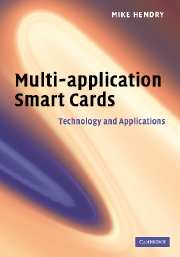Book contents
2 - When is a card multi-application?
from Part I - Introduction
Published online by Cambridge University Press: 11 August 2009
Summary
The term ‘multi-application card’ is used in different ways by different groups of people: the marketing department sees the card in terms of selling features, the IT department according to the technologies used by the card, and the operations department looks at the number of processes the card supports.
This chapter explores the definitions of the term and sets the framework within which the remainder of the book will use it.
Single-function cards
Most smart cards have a single function. There is a simple reason for this: the card issuer has issued the card to solve a specific problem or to provide a specific service. The relationship between the card issuer and the card-holder is generally not complex, while most card issuers are in one well-defined business. So there is no reason for the card issuer to provide multiple functions on the card, which in most cases would add to the cost.
Smart cards are, in many cases, replacing a magnetic stripe or visual identification card, which generally had only one function. So, for example, the earliest smart cards were used mainly for public telephones: they held value that could be loaded by the telephone company and decremented by the user making calls, and this was their only function. Many schools issue cards to their pupils for recording attendance at classes, while companies issue cards to their employees for access to buildings. These cards need no further functions.
- Type
- Chapter
- Information
- Multi-application Smart CardsTechnology and Applications, pp. 11 - 16Publisher: Cambridge University PressPrint publication year: 2007



